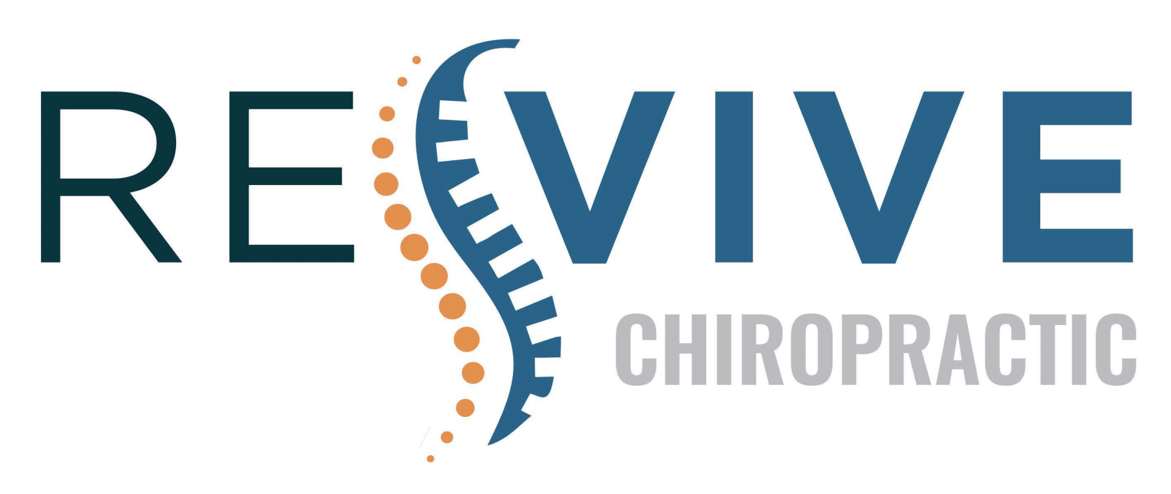You might be surprised to learn that alleviating tension headaches doesn't always require medication. By incorporating simple practices into your daily routine, you can find relief in unexpected ways. Techniques like mindful breathing, acupressure, and even the right essential oils can greatly ease discomfort. Plus, addressing hydration and posture can play a pivotal role in prevention. Curious about how these approaches can transform your experience with headaches? The following insights could offer the relief you've been seeking.
Breathing Exercises for Relaxation
Breathing exercises can be a simple yet effective way to relieve tension headaches. When you focus on your breath, you can shift your attention away from the discomfort and promote relaxation.
Start by finding a quiet space where you can sit or lie down comfortably. Close your eyes and take a deep breath in through your nose, allowing your abdomen to expand. Hold that breath for a moment, then slowly exhale through your mouth, letting go of any tension in your body.
Try a technique called diaphragmatic breathing. Place one hand on your chest and the other on your abdomen. As you breathe in deeply, focus on making your abdomen rise while your chest remains relatively still. This encourages deeper breaths, which can reduce stress and tension.
Repeat this process for five to ten minutes, and you'll likely notice a significant decrease in your headache symptoms.
You can also practice box breathing, which helps regulate your breath. Inhale for a count of four, hold your breath for another count of four, exhale for four, and then pause for four before starting again. This rhythmic pattern not only calms your mind but also lowers your heart rate, further alleviating headache tension.
Incorporating these breathing exercises into your daily routine can help you manage and reduce the frequency of tension headaches. By taking just a few moments to breathe mindfully, you can create a sense of calm that supports your overall well-being.
Acupressure Techniques to Try
If you're looking for relief from tension headaches, acupressure can be a game changer.
You can target key acupressure points with simple techniques that you can easily incorporate into your routine.
Let's explore how to apply these methods and the benefits you might experience.
Key Acupressure Points
Understanding key acupressure points can be your secret weapon against tension headaches. By applying pressure to specific areas, you can relieve pain and restore balance to your body.
One of the most effective points is located between your eyebrows, known as Yin Tang. Press gently here for a few minutes to help ease stress and tension.
Another important acupressure point is the LI4, situated in the webbing between your thumb and index finger. Applying pressure to this spot can alleviate headache symptoms and promote relaxation.
You might also want to focus on the GB20 points, located at the base of your skull, just behind the neck. Massaging these points can release tension and improve circulation.
Lastly, don't overlook the TH5 point, which is found about two inches above your wrist on the outer side. Stimulating this area can help relieve headaches caused by stress.
Step-by-Step Technique
You can effectively relieve tension headaches by following a few simple acupressure techniques.
Start by locating the LI4 point, situated between your thumb and index finger. Firmly press this area for about 30 seconds while taking deep breaths. You should feel a slight discomfort, but it shouldn't be painful.
Next, find the GB20 points, located at the base of your skull, just behind the ear. Use your thumbs to apply gentle pressure here for 30 seconds. This can help alleviate pressure from your head and neck.
Now, move to the Yintang point, located between your eyebrows. Press gently for another 30 seconds. This point is known for its calming effects, which can ease tension.
Finally, don't forget the Taiyang points, located on the temples. Use your fingertips to apply pressure in small, circular motions for about 30 seconds. This can help relieve headache pain and promote relaxation.
Remember to breathe deeply throughout these techniques, allowing your body to relax.
Combining these acupressure methods can create a powerful tool for managing tension headaches effectively. Give them a try whenever you feel discomfort!
Benefits of Acupressure
Experiencing the benefits of acupressure can provide significant relief from tension headaches and promote overall well-being. This ancient technique involves applying pressure to specific points on your body, helping to release built-up tension and restore balance.
One of the key advantages of acupressure is its ability to increase blood circulation, which can alleviate pain and reduce inflammation. When you apply pressure to acupressure points, you stimulate the release of endorphins, your body's natural painkillers. This can lead to a decrease in headache frequency and intensity over time.
Plus, acupressure is easy to practice at home, making it a convenient option for managing headaches whenever they strike. You can target points like the space between your thumb and index finger, or the area at the base of your skull.
Regularly practicing acupressure not only helps with headaches but can also improve your mood and reduce stress, contributing to overall mental and physical health. So, why not give it a try? You might be surprised at how effective this simple technique can be in alleviating your tension headaches.
The Power of Hydration
Staying hydrated plays an essential role in preventing tension headaches. When you don't drink enough water, your body can become dehydrated, leading to increased muscle tension and discomfort. This tension often manifests as a headache, making it vital to keep your hydration levels in check.
Here are a few surprising benefits of staying hydrated:
- Enhances Mood: Proper hydration can improve your mood and reduce stress, which are both factors that can trigger tension headaches.
- Boosts Energy Levels: When you're well-hydrated, you'll find it easier to stay focused and energized, reducing the likelihood of headaches caused by fatigue.
- Improves Circulation: Adequate water intake helps your blood flow more freely, ensuring that oxygen and nutrients reach your brain effectively.
- Reduces Muscle Tension: Staying hydrated helps keep your muscles relaxed and less prone to tightness, which can alleviate headache symptoms.
To make hydration a habit, carry a water bottle with you throughout the day. Set reminders on your phone to drink water regularly, and try to incorporate water-rich foods like fruits and vegetables into your meals.
If you're exercising or spending time in the sun, you'll need to increase your fluid intake even more. By prioritizing hydration, you can take a significant step toward minimizing tension headaches and enhancing your overall well-being.
Stretching and Movement Practices
To ease tension headaches, incorporating stretching and movement practices into your routine can make a big difference.
Gentle neck stretches, yoga for relaxation, and posture correction exercises help relieve tightness and improve overall well-being.
Let's explore how these techniques can benefit you.
Gentle Neck Stretches
Gentle neck stretches can greatly relieve the tension that builds up in your neck and shoulders. By incorporating these simple movements into your daily routine, you can ease discomfort and prevent headaches.
Here are a few effective stretches you can try:
- Side Neck Stretch: Tilt your head to one side, bringing your ear toward your shoulder. Hold for 15-30 seconds before switching sides.
- Chin Tucks: While sitting or standing, gently tuck your chin towards your chest. Hold for a few seconds, then release. This helps align your neck and spine.
- Shoulder Rolls: Roll your shoulders forward in a circular motion for 10 repetitions, then reverse the direction. This helps release tension in your upper back.
- Neck Rotation: Slowly turn your head to look over one shoulder, hold for a moment, then rotate to the other side. Repeat several times.
These gentle neck stretches are easy to do anywhere, whether you're at home or at work.
By taking just a few minutes each day, you can considerably reduce the tension that contributes to headaches and improve your overall comfort.
Yoga for Relaxation
Yoga offers a powerful blend of stretching and movement practices that can greatly enhance relaxation and reduce tension. By incorporating yoga into your routine, you can effectively release built-up stress in your body and mind. Simple poses like Child's Pose or Cat-Cow allow you to gently stretch your muscles, promoting blood flow and relieving tightness.
As you practice, focus on your breath. Deep, mindful breathing helps calm your nervous system, encouraging a sense of tranquility. Poses such as Forward Bend and Legs-Up-the-Wall can further soothe your body, as they promote relaxation and help alleviate headaches caused by tension.
Consider joining a class or following a video to guide you through sequences that focus on relaxation. Remember to listen to your body and modify poses to suit your comfort level.
Even just a few minutes of yoga each day can make a significant difference in how you feel. Incorporating yoga into your routine not only enhances flexibility but also fosters a deeper connection between your body and mind, paving the way for a more relaxed and tension-free life.
Posture Correction Exercises
Maintaining good posture is essential for preventing tension headaches and promoting overall well-being. Poor posture can lead to muscle strain, tension, and discomfort, all of which can trigger headaches. By incorporating posture correction exercises into your daily routine, you can alleviate this strain and enhance your comfort.
Here are some effective exercises to help you improve your posture:
- Chin Tucks: Gently tuck your chin towards your chest to align your neck and spine. Hold for a few seconds and repeat several times.
- Shoulder Rolls: Roll your shoulders forward, up, and back in a circular motion. This helps release built-up tension in your shoulder muscles.
- Wall Angels: Stand with your back against a wall, arms bent at 90 degrees. Slowly slide your arms up and down the wall, maintaining contact. This strengthens your upper back.
- Seated Cat-Cow Stretch: While sitting, alternate between arching your back and rounding it. This dynamic movement improves spinal flexibility and posture.
Incorporating these simple exercises into your day can greatly reduce tension and help you maintain better posture, ultimately alleviating headache triggers.
Aromatherapy for Tension Relief
Exploring aromatherapy can be a powerful way to alleviate tension headaches. Aromatherapy utilizes essential oils derived from plants, which can soothe your mind and relieve physical tension. By incorporating specific scents into your routine, you can create a calming atmosphere that promotes relaxation.
One of the most effective essential oils for tension relief is lavender. Its calming properties can reduce anxiety and improve sleep quality, which is vital when you're dealing with headaches. To use lavender, you can add a few drops to a diffuser, or simply inhale it directly from the bottle.
Another excellent option is peppermint oil. The menthol in peppermint helps to relax muscles and increase circulation, offering immediate relief. You can apply diluted peppermint oil to your temples and back of your neck for soothing effects.
Eucalyptus oil is another powerful choice. Known for its anti-inflammatory properties, it can help clear your sinuses and ease headaches caused by tension. You might consider adding it to a warm bath or using it in a steam inhalation.
When using aromatherapy, remember that personal preference plays a big role. Experiment with different oils and methods to find what works best for you.
Whether you're diffusing oils, using roller blends, or creating a relaxing space with candles, these aromatic solutions can be an effective part of your headache relief toolkit. Embrace the healing power of scents, and you'll likely find a newfound sense of relief from tension headaches.
Mindfulness and Meditation Methods
How can mindfulness and meditation help you manage tension headaches? These practices encourage relaxation and focus, which can greatly reduce the frequency and intensity of your headaches.
By tuning into your body and breath, you can create a calming space that helps alleviate stress and tension that often leads to headaches.
Here are some mindfulness and meditation methods you can try:
- Deep Breathing: Inhale deeply through your nose, hold for a few seconds, and exhale slowly through your mouth. Repeat this for several minutes to bring your body into a relaxed state.
- Body Scan: Lie down comfortably, close your eyes, and mentally scan your body from head to toe. Notice areas of tension and consciously relax them, releasing tightness as you go.
- Guided Meditation: Use an app or online resource to follow a guided meditation. These can help you focus your mind and detach from stressors that contribute to headaches.
- Mindful Walking: Take a walk outside, focusing on the sensations of your feet hitting the ground and the sounds around you. This practice can help clear your mind and reduce tension.
Incorporating these mindfulness and meditation methods into your daily routine can empower you to manage tension headaches more effectively.
You'll not only find relief but also cultivate a greater sense of well-being and balance.
Conclusion
By incorporating these simple practices into your daily routine, you can effectively alleviate tension headaches. Whether it's through mindful breathing, acupressure, or the calming scents of essential oils, each technique offers a unique way to find relief. Stay hydrated, stretch regularly, and embrace mindfulness to enhance your overall well-being. Remember, taking small steps can make a big difference in managing tension headaches, so give these methods a try and discover what works best for you.



